We woke to more beautiful scenery this morning – and a much smoother boat ride. We had passed back into the channels just after dawn and out of the rolling seas. Breakfast was the usual fare, and I tried to have a shower after breakfast this time, but still had little water pressure.
The couple sitting next to us at breakfast had a guide to birds of Chile and they were discussing some of the birds they had seen on the trip so far – they only had binoculars. I went and got my laptop with my photos on it and asked if they could help me identify some of the birds. Some were easy – others not so. The thing we were all surprised at was one of my photos – which I had originally thought was just a gull or cormorant floating in the water, actually turned out to be a Magellanic Penguin on closer inspection. The white “C” around the ears was a clear indication. Now that I know what to look for, I have since observed many of them just floating past the boat. Difficult to spot (and almost impossible to identify) with the naked eye, the 300mm zoom lens really comes in handy.
The birds we think I had photographed are the Imperial Cormorant, Red-legged Cormorant, Magellanic Penguin, Black-browed Albatross and Kelp Gull.
[table1]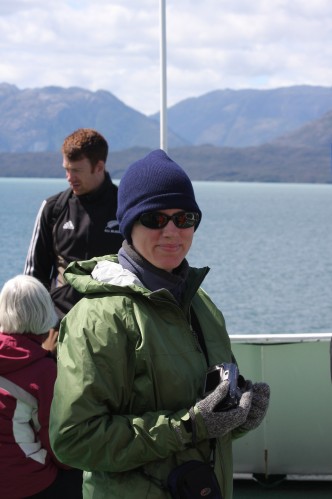
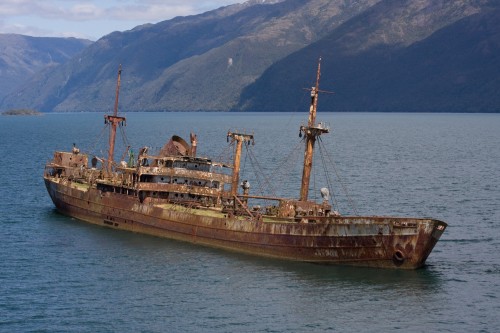
We headed up on deck after breakfast and spent most of the day standing or sitting around watching the world go by. I have been wearing my long-johns all day, which has made it a lot more comfortable up in the cold wind – everyone agrees it is getting colder the further south we go.
[table1]

Lunch was a choice of corn pie or chicken – we both chose the chicken this time. While the food hasn’t been fantastic, it has been very edible – we certainly haven’t gone hungry on this trip.
[table1]
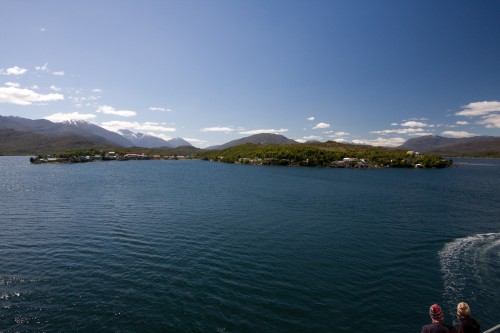
In late afternoon we stopped in Puerto Eden, our only stop on the cruise. This is a small township of just over 100 people on Wellington Island – very isolated. The people living here are some of the last remaining Kaweskar people. Normally we would have the option of disembarking here for a while, but I think we are running late, so we were not given the chance and just watched from the decks as a number of small boats came across from the settlement to collect supplies from the boat. Several local families got on board as well – joining us on the last leg of the trip to Puerto Natales.
[table1]

We were scheduled to reach the Glacier Pio XI at 8:30pm – we were all worried that we would not have good light for our visit, despite the sun going down at nearly 10pm (it goes behind the mountains quite a bit before this). This of course was right in the middle of dinner – so we lined up early to get our food so we could get rugged up and up on deck to get a good spot for the approach.

Dinner was a choice of Salmon (which Leanne really enjoyed) and beef with rice, and some jelly with fruit for dessert.
[table1]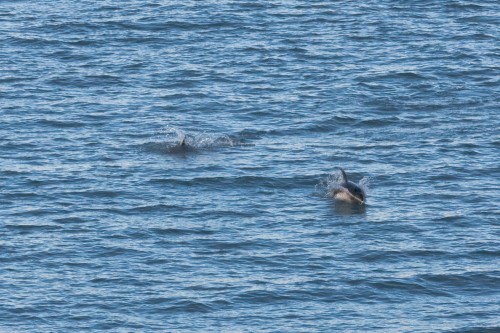
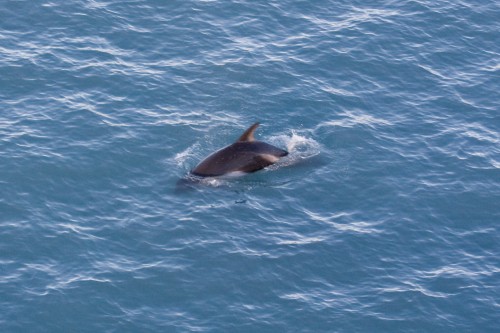
After eating we grabbed our gear and headed up on deck – found a good spot and waited. We could already see the glacier in the distance – and some small icebergs floating a fair distance away from it. As we got closer, we were rewarded with a few different birds, some Magellenic Penguins and finally, quite close to the glacier, a pod of Dolphins which put on a show for us. As we got closer to the glacier, we could really see the vivid blue colour in the ice and see massive crevasses between spires of ice. Quite spectacular. The last light of day added an extra dimension to the view.
[table1]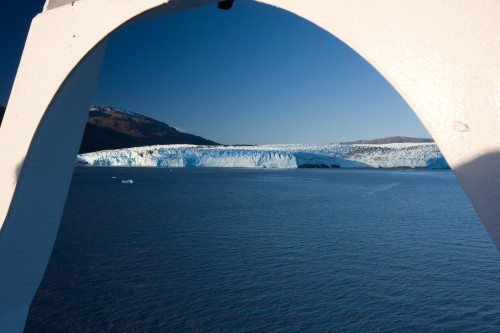

The wind coming off the ice was bitterly cold – we even with my t-shirt, long sleeve t-shirt, Polartec fleece and my rain jacket – I also had my long-johns, my gloves and beanie on … a full face balaclava would have helped a bit really. They drove the boat to within several hundred metres of the glacier, turned 90 degrees one way, and then the other, before turning around and heading back down the body of water to resume our journey.

We later spent some time in the dining room playing games and working on the computer before heading to bed around midnight.


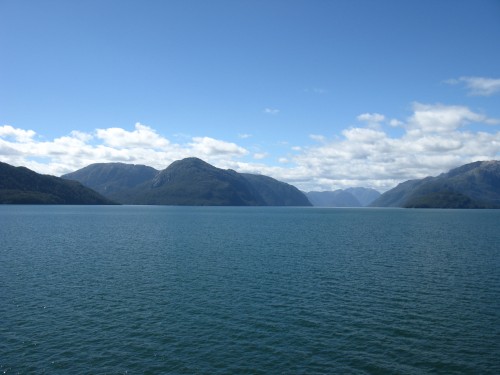
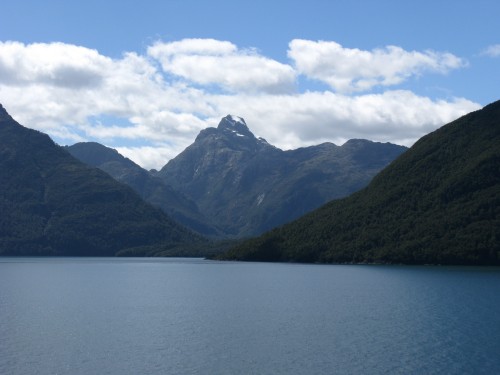

Additional photos of the Casma
https://web.archive.org/web/20120609122547/http://histarmar.com.ar/Naufragios/7%20Estrecho%20de%20Magallanes/EM-04.htm
Not the Cotopaxi. The Cotopaxi was found sunk outside of the Bermuda Triangle some distance North about 35 miles off the coast from St. Augustine, and was positively identified earlier this year.
The ship above was photographed off the coast of Chile in 2010 here is the original photo taken at that time on the original blog it was stolen from… They thought it was the Cotopaxi on the original blog, but it wasn’t.
https://www.simonhampel.com/day-19-navimag/
This ship built in 1889 actually belonged to the Chilean Navy and was named Casma. In 1916 it was sent on a search for some of the Germans from the battle cruiser SMS Dresden, the steamship Gottingen, and the Barque Herzogin Cecilie that had been interned on Quiriquina Island for the duration of the war. The Germans had escaped on board of the cutter Tinto and was bound for Germany. Francis Stronge, the British Minister Plenipotentiary at Santiago, Chile, at the time requested that the Chilean Government attempt to recapture the Germans in fulfillment of Chile’s obligations as a neutral country. They sent the Casma to search for the Tinto.
While in pursuit on 2 January, 1917 not far from Golfo Ladrillero close to Esperanza Island, the ship hit a rock and buckled her plates, popping rivets and breaching several compartments. The engine room gradually flooded, impeding the use of the electric generator and, consequently, the radio. The Casma was able to continue for a further 600 m and run aground on a sandy beach, far from the main shipping channel in a sparsely inhabited region.
In order to obtain assistance, and owing to the extreme desolation of these parts and the impossibility of traveling overland, Capitán Lagos sent one of the lifeboats, under the command of Teniente Luis Pepper van Buren, to the main channel. They took with them water, food rations for several days, a compass, chronometer, navigation charts, binoculars, pocket lamp and a flare gun, as well as a rifle and Pepper’s service weapon.
Leaving on 3 January, Pepper’s party headed for the Sarmiento Channel. On 7 January, in Puerto Bueno, they alerted the steamer Chiloé by firing a Flare. The steamer promptly sailed to the Picton Channel to render help to the crew of the Casma. She was followed to the shipwreck by other rescue vessels – on 10 January the cutters Meteoro and Yáñez, on 13 January the tug Ortiz and on 18 January the cruiser Chacabuco. However, despite three months of effort, the Casma could not be freed and had to be abandoned.
Story of the Casma including the wreck location.
https://en.wikipedia.org/wiki/Chilean_ship_Casma_(1889)
Other photos of the wreck
https://web.archive.org/…/7%20Estrecho%20de…/EM-04.htm
The final resting place of the Cotopaxi
https://www.npr.org/…/wrecks-identification-95-years…
It´s the Ship, Cotopaxi, is the lost in 1925 or view movie in 1978?
Américo Valadez.